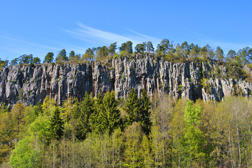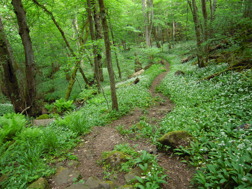The Precipices of the Mountains
There are no other table land mountains in the province of Västergötland with such spectacular precipices like Halle- and Hunneberg. Hundreds of years ago the mountains served as a natural ancient castle to which people, living in close proximity, could take refuge in time of war and unrest in the country.
A rich diversity of Plant and Animal life
At the present time, the precipices are more famous for their rich flora and fauna, which include a number of rare species. The local climate, in combination with a continuous presence of forest, has created good conditions for a rich flora and fauna. The conditions governing the life of the flora and fauna in the precipices around the mountains is favorable for various animals and plants that normally have a north-south distribution, alternatively a westerly distribution. Especially noticeable is the presence of a number of rare lichens with oceanic distribution which can be found in the precipices of Halle-and Hunneberg.
In the precipices to the south species that love the warmth, such as St. John’s wort can found. In the cooler precipices to the north there is a rich moss flora. The fungi in the area are interesting and such fungi as: Fistula hepatica, Laetiporus sulphureus, Hapalopilus croceus can be found here.
Signs of Human activity
Above the precipices, on the edge of the mountain, there is an oak and pine forest with pine trees that are over 350 years old, and some of the oak trees are even older. Locally, one can also find mountain ash, aspen, maple, and lime tree. Since feeding off the forest ceased in 1918 young spruce trees are gaining ground and threaten the survival of old trees.
Below the high precipices made of diabase, are plenty of traces that bear witness of long time human activity. Here, mine shafts and old kilns give evidence of extensive burning of lime which was extracted out of the mountains. Please be aware of the risk of the old mineshafts caving in if you plan on visiting them.




